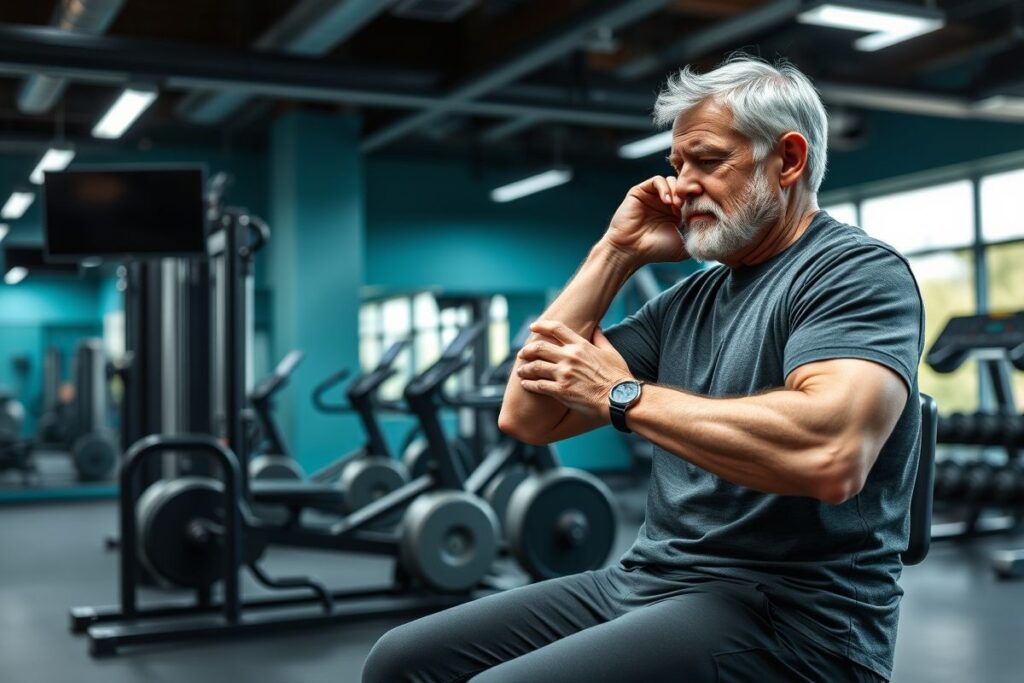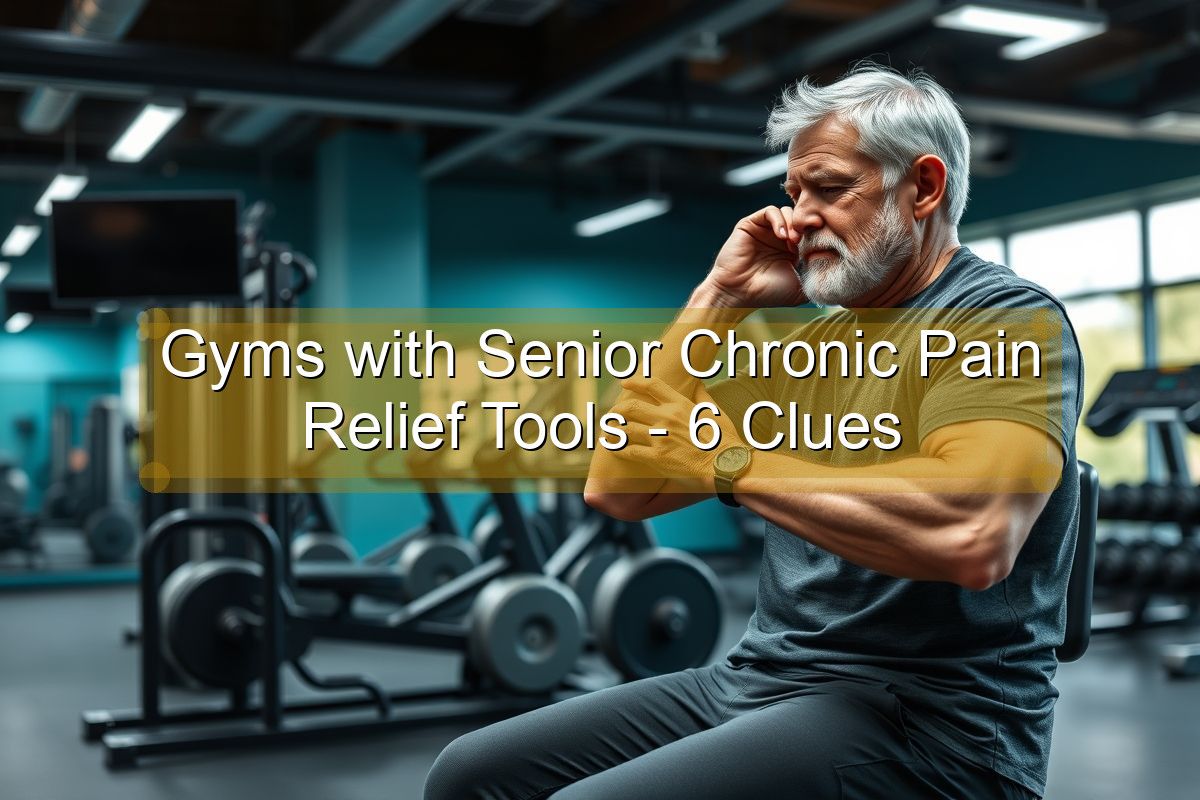Gyms with Senior Chronic Pain Relief Tools: 6 Clues

Chronic pain can significantly impact the quality of life for seniors, limiting mobility and making everyday activities challenging. Finding the right gym can be a game-changer, offering a supportive environment and specialized equipment to manage and even alleviate chronic pain. However, not all gyms are created equal. This article explores six key clues to help seniors identify gyms equipped with the tools and expertise necessary for chronic pain relief. These clues encompass everything from specialized equipment like warm water pools and anti-gravity treadmills to the availability of certified trainers experienced in working with seniors and chronic conditions. Making an informed decision is crucial for seniors seeking safe and effective exercise programs. This guide will empower you to find the perfect gym to support your journey towards a more active and pain-free life.
Clue 1: Aquatic Therapy Options
The Benefits of Warm Water Workouts
Warm water provides buoyancy, reducing stress on joints and allowing for a wider range of motion. This makes aquatic therapy ideal for seniors with arthritis, back pain, and other chronic conditions. The warmth of the water also helps to relax muscles and improve circulation, further easing pain and stiffness. Aquatic exercises can improve cardiovascular health, strength, and flexibility without putting undue pressure on sensitive areas.
Accessibility Features in Pools
Look for gyms with accessible pool entries, such as ramps or lifts, to accommodate seniors with mobility limitations. Handrails and other support structures within the pool are also essential for safety and comfort. The pool temperature should be consistently maintained within a therapeutic range, typically between 88 and 94 degrees Fahrenheit.
Specialized Aquatic Equipment
Some gyms offer specialized aquatic equipment, such as water weights and resistance bands, to enhance the effectiveness of water workouts. These tools can help seniors build strength and improve range of motion while minimizing impact on their joints.
Clue 2: Low-Impact Exercise Equipment
Anti-Gravity Treadmills
Anti-gravity treadmills allow users to exercise at a reduced body weight, minimizing stress on joints. This technology is particularly beneficial for seniors with osteoarthritis, knee pain, or hip problems. It allows for comfortable cardiovascular exercise and gait training without exacerbating pain.
Elliptical Trainers and Recumbent Bikes
Elliptical trainers and recumbent bikes offer low-impact cardiovascular workouts that are gentle on the joints. The seated position of recumbent bikes provides added back support, making them a good option for seniors with lower back pain. Ellipticals provide a full-body workout while minimizing impact.
Vibration Plates
Vibration plates can help improve balance, circulation, and muscle strength. The gentle vibrations stimulate muscles and can help reduce pain and stiffness. They are particularly useful for seniors looking to improve bone density and reduce the risk of falls.
Clue 3: Certified Trainers with Senior Experience
Specialized Certifications
Look for gyms with certified trainers who specialize in working with seniors and individuals with chronic pain. Certifications like the American College of Sports Medicine (ACSM) Certified Personal Trainer or the National Strength and Conditioning Association (NSCA) Certified Personal Trainer are good indicators of qualified professionals. Additional certifications in areas like senior fitness or corrective exercise are even more valuable.
Experience with Chronic Conditions
Inquire about the trainers’ experience working with specific chronic conditions such as arthritis, osteoporosis, or fibromyalgia. A trainer with relevant experience will be better equipped to develop a safe and effective exercise program tailored to your individual needs.
Personalized Training Programs
Ensure the gym offers personalized training programs that consider your specific limitations and goals. A cookie-cutter approach is not suitable for seniors with chronic pain. The training program should be regularly assessed and adjusted based on your progress and feedback.
Clue 4: Accessible Facility Design
Easy Access and Navigation
The gym should be easily accessible, with ample parking and convenient entrances. The layout should be easy to navigate, with clear signage and accessible equipment placement. Consider gyms with elevators or ramps for easy access to different floor levels.
Adaptive Equipment Options
Look for gyms that offer adaptive equipment, such as modified weight machines or specialized grips, to accommodate seniors with limited mobility or dexterity. This demonstrates a commitment to inclusivity and accessibility.
Supportive and Inclusive Environment
The gym should foster a supportive and inclusive environment where seniors feel comfortable and welcome. Observe the interactions between staff and members to gauge the overall atmosphere. A positive and encouraging environment can significantly impact motivation and adherence to an exercise program.
Clue 5: Pain Management Resources
On-site Physical Therapy
Some gyms offer on-site physical therapy services, which can be a valuable resource for seniors with chronic pain. This provides a convenient and integrated approach to pain management and rehabilitation.
Educational Workshops and Seminars
Gyms that offer educational workshops and seminars on topics related to pain management, nutrition, and healthy aging demonstrate a commitment to holistic wellness. These resources can empower seniors to take an active role in managing their health.
Support Groups and Community Programs
Connecting with others who share similar experiences can be incredibly beneficial. Look for gyms that offer support groups or community programs specifically for seniors with chronic pain.
Clue 6: Trial Memberships and Consultations
Free Trial Period
Most reputable gyms offer a free trial period, allowing you to experience the facilities and services before committing to a membership. Take advantage of this opportunity to try out the equipment, meet the trainers, and assess the overall environment.
Free Consultations
Many gyms offer free consultations with trainers. This is a valuable opportunity to discuss your specific needs and goals, and to determine if the gym is the right fit for you. Ask about their experience with chronic pain.
Membership Options and Costs
Inquire about different membership options and associated costs. Ensure the gym offers flexible membership plans that align with your budget and exercise preferences.
Conclusion
Finding the right gym is a crucial step for seniors seeking relief from chronic pain. By considering these six clues, you can identify gyms equipped with the tools, expertise, and supportive environment necessary for a safe and effective exercise program. Remember to prioritize accessibility, specialized equipment, and certified trainers with experience in working with seniors and chronic conditions. Take advantage of free trials and consultations to find the perfect fit for your individual needs and embark on your journey towards a more active and pain-free life.
